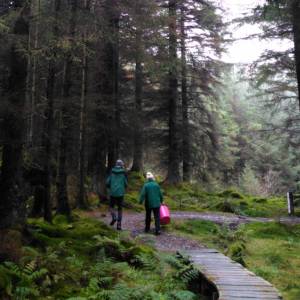Sugar Forest
Having had the first few days in Cairns zipping around by bike to visit friends and forest, I caught the ‘Spirit of Queensland’ train early this morning to travel down the coastal strip to Townsville, where Magnus lives. The train is a high speed tilt but can only travel very sedately due to tracks, level crossings and short rural stations, so it takes 6 hours and is all extremely civilised. For the 350 miles the landscape is uniformly agricultural, rich acres upon acres of bananas and sugar cane. In much the way Cockermouth smells of hops when Jennings is brewing, Gordonvale, one of the first rural stops, with its sugar processing plant, smells like riding into a warm treacle jar, with the taste of sweet lingering in the back of your throat for many miles on.
It’s a bucolic scene with the mountains rising up behind and the square farm houses set at regular intervals but it illustrates in absolute terms the reason why the tiny remnant swamp forest at Cairns is so special. Other than an isolated patch at Mission beach, nothing else is left.
When cleared, swamp jungle land, with its mix of granitic alluvial wash-off from the hills and 1000’s of years of leaf litter, coupled with abundant rainfall and sunshine, is one of the most productive soils in the country. Occasional ribbons of trees following waterways or a shelter clump is all that is left of the primeval forest habitat that once stretched for 1000s of miles.
Any chance of planting some wildlife corridors?
Saccharum Facts
First cultivated for sugar in the mid C19th, Queensland now produces 95% of the 35 million tonnes of cane produced per annum from about 4000 farms. It is the second largest export after wheat and brings in a massive AU$2.5 billion a year. (Agrifutures, Australia)
- 4
- 0
- Olympus VG160,X990,D745
- 1/1000
- f/2.8
- 5mm
- 80

Comments
Sign in or get an account to comment.


